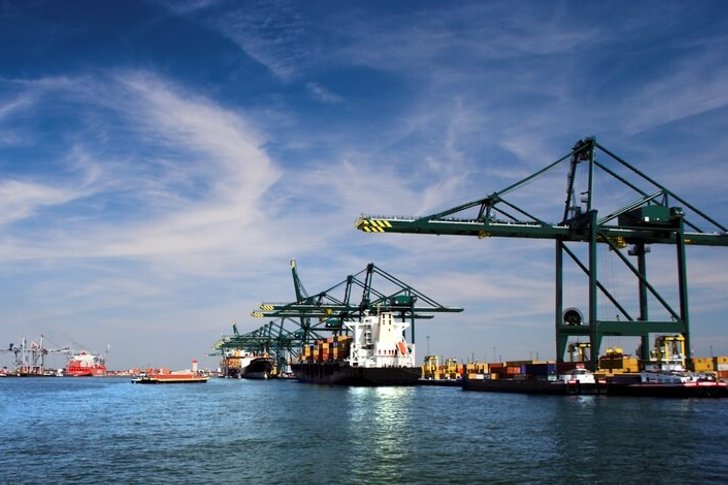The second largest and most important city in Belgium, Antwerp is a major seaport, the birthplace of Rubens and Van Dyck, and a place with a strong free trade tradition. The very first trading exchanges appeared here, giving the city a powerful impetus to development and prosperity.
Antwerp will please the tourist with the magnificent Flemish Renaissance and Baroque, captured in the facades of the houses of the city's trade guilds, rich collections of paintings collected in galleries, as well as an abundance of modern trends in fashion and art.
What is happening today in Antwerp is no less important and interesting than the historical heritage of past centuries. Therefore, the city does not look medieval like Bruges, its streets harmoniously combine the past and the present.
What to see and where to go in Antwerp?
The most interesting and beautiful places for walking. Photos and a short description.
- Grote Markt
- Antwerp City Hall
- Guild buildings
- Antwerp-Central
- Castle Sten
- Cathedral of Our Lady of Antwerp
- Church of St. James
- St. Paul's Church
- Church of San Carlo Borromeo
- Royal Museum of Fine Arts
- Plantin-Moretus Museum
- Fashion Museum
- Mayer van den Bergh Museum
- M.A.S. Museum
- Rubens House
- House of Butchers
- Antwerp Zoo
- Meir street
- Diamond Quarter of Antwerp
- Port of Antwerp
Grote Markt
Grote Markt is one of the most picturesque squares in Antwerp. The main place in its architectural ensemble is given to the Town Hall, houses of merchant guilds in the style of the Flemish Renaissance and the central Brabo fountain. Many historical buildings have been preserved since the 16th century. The fountain, crowned with a sculpture of the mythical hero Brabo - the winner of the evil giant and the champion of tribute from unfortunate people, appeared at the end of the 19th century.
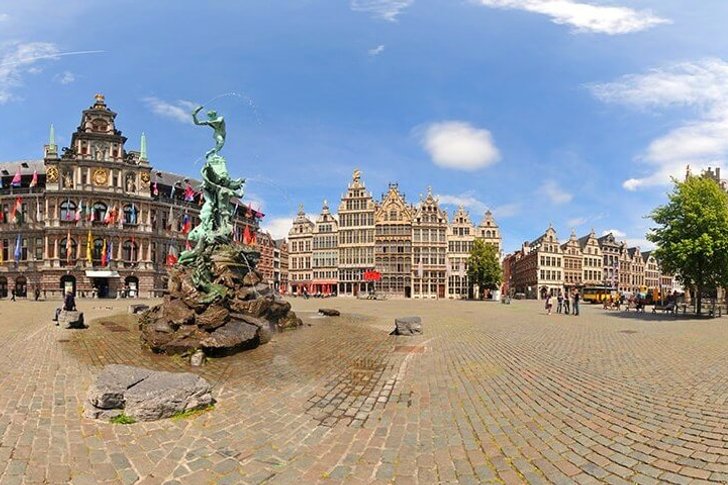
Antwerp City Hall
Historical building of the XVI century in the style of the Dutch Renaissance with Gothic elements, crowned with statues of representatives of the Habsburg dynasty, the Counts of Antwerp and the Dukes of Brabant. The town hall was heavily damaged during the capture of the city by the Spaniards in the 16th century, so the interiors, for the most part, belong to the 19th century. The town hall is a striking example of the original architectural style of the Netherlandish Renaissance.

Guild buildings
A group of houses opposite the Town Hall, which for many years belonged to the city associations of merchants and artisans. There is the House of Old Scales, the House of Coopers, the House of the Big Crossbow, the House of Clothmakers. Guild buildings were erected in the 19th century in the best traditions of the Renaissance. The peaked roofs of the houses are decorated with gilded figures, the front facades are decorated with a series of lancet windows and decorative elements.
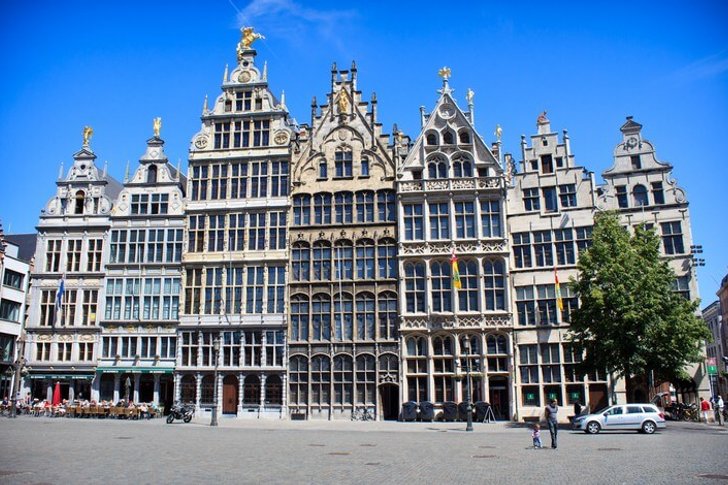
Antwerp-Central
The railway station, which is recognized as one of the most significant sights of Antwerp. He has repeatedly taken places in the top ten most beautiful stations in the world. The building was erected at the beginning of the 20th century according to the project of the architect L. Delasenzeri. The appearance of the station resembles a palace and a cathedral at the same time due to the solemn architecture and the richness of the facade decoration. More than 20 types of marble were used to decorate the interiors.
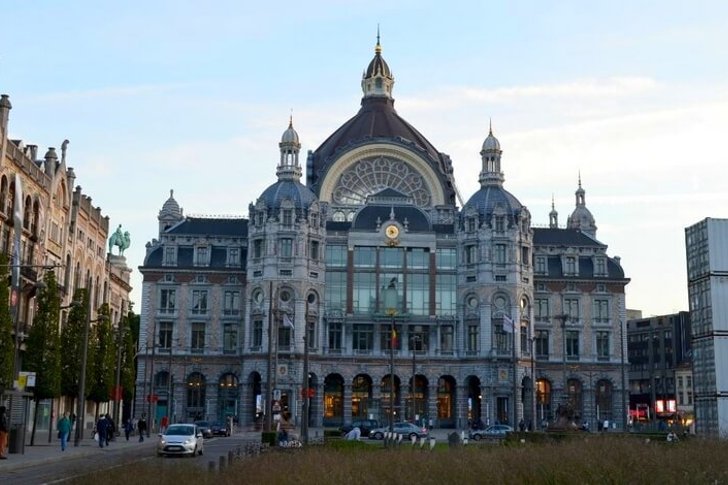
Castle Sten
Fortress of the XIII century on the river Scheldt. It was almost the only stone building in the area in that era, the rest of the buildings were made of wood. Until the 19th century, the castle was used as a prison. There is an assumption that the fortification was laid by the Normans in the 9th century. In the 20th century, a monument to the giant Long Wapper was erected on the castle square. This character is a popular hero of Antwerp legends, he scares and haunts people, leading them to death.
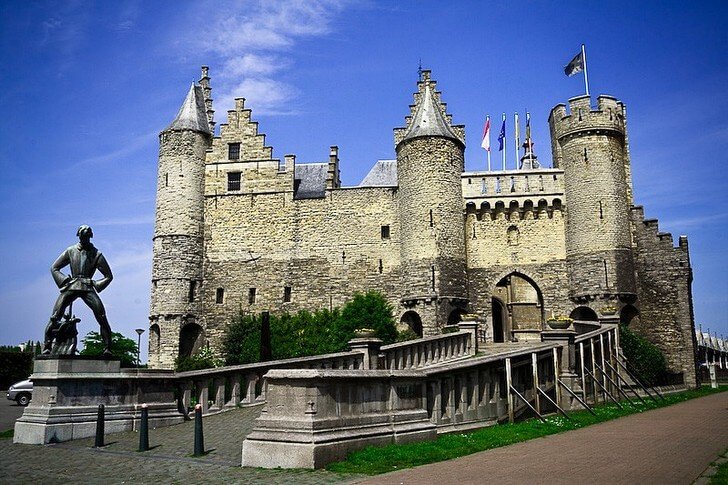
Cathedral of Our Lady of Antwerp
Roman Catholic Cathedral of the XIV century, built in the Gothic style. Construction work is still considered unfinished. The cathedral houses the works of famous artists: Rubens, Van Veen, M. de Vos and J. De Backer. The bell tower of the temple is included in the UNESCO heritage list. In the XV-XVI centuries. the building was badly damaged during anti-Catholic protests. The result of these unrest was the legalization of the Protestant branch of Christianity.
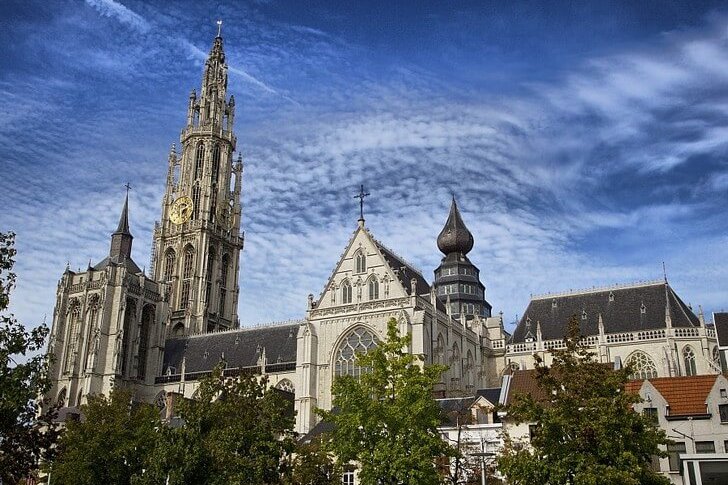
Church of St. James
Church in the late Gothic style, dedicated to the Apostle James. In the first half of the 15th century, a modest chapel stood on the site of the church. In 1491, work began on the construction of the temple, but by the middle of the 18th century they had not yet been completed. The Iconoclastic uprising of 1566 and other church unrest greatly interfered with the construction. The interior of the temple is made in the Baroque style, inside there are a couple of dozen private altars of famous citizens in the past.
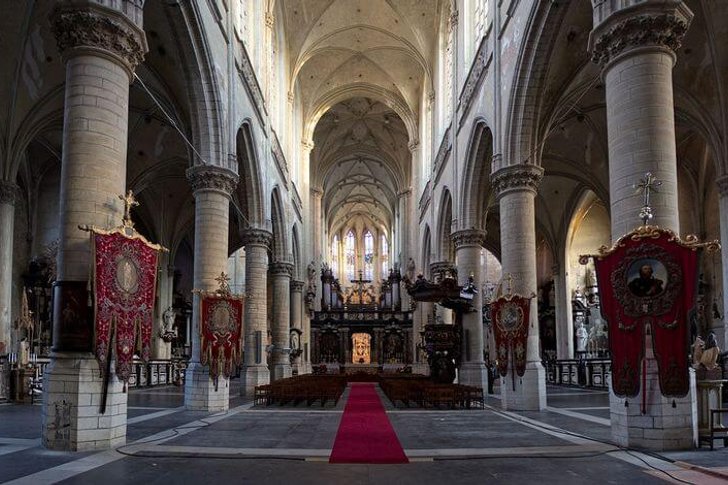
St. Paul's Church
Gothic church of the 16th century with baroque interiors, erected on the square in front of the Antwerp cattle market (then it was the outskirts of the city). Many works of art are stored in the church: copies of the paintings “Madonna with a Rosary” by Caravaggio and “Flagellation” by Rubens, canvases by masters Jordaens and Van Dyck. On the territory of the temple, classical music concerts are held, which involve an ancient organ of the 17th century.

Church of San Carlo Borromeo
Temple in the style of magnificent baroque, erected in the XVII century in honor of the inviolability and perseverance of the Catholic faith. The construction was supposed to demonstrate to the strengthened Protestants the power of the "true religion" and the impossibility of its fall. The facade, the main altar and the interior were designed with the participation of P. Rubens himself. Such a huge amount was spent on the construction that even the Pope was embarrassed. At the beginning of the 18th century, as a result of a fire, most of the original decoration was lost.

Royal Museum of Fine Arts
One of the best museums in Belgium with a rich and unique collection. The exposition contains works by local masters, as well as artists from other European countries. The museum was founded at the beginning of the 19th century with the participation of the Antwerp Painters' Guild. Mayor Van Ertborn made an invaluable contribution to the replenishment of funds - in the middle of the 19th century, he donated 141 paintings to the gallery, among which were many works by Flemish painters.
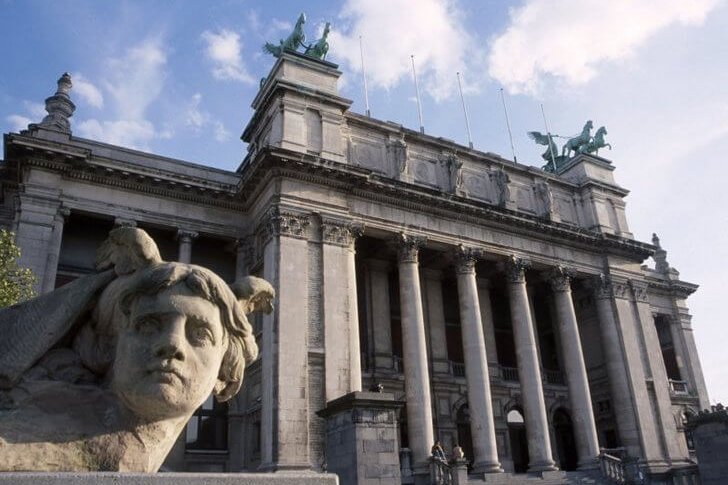
Plantin-Moretus Museum
The museum is housed in a 16th-century printing house. The exhibition tells the story of the emergence and development of printing and typography in Antwerp. The museum has a unique library that stores printed books over 400 years old. The collection consists of vintage printing presses and typefaces. The museum was organized in 1877 and named after the two owners of the printing house - H. Plantin and E. Moretus.
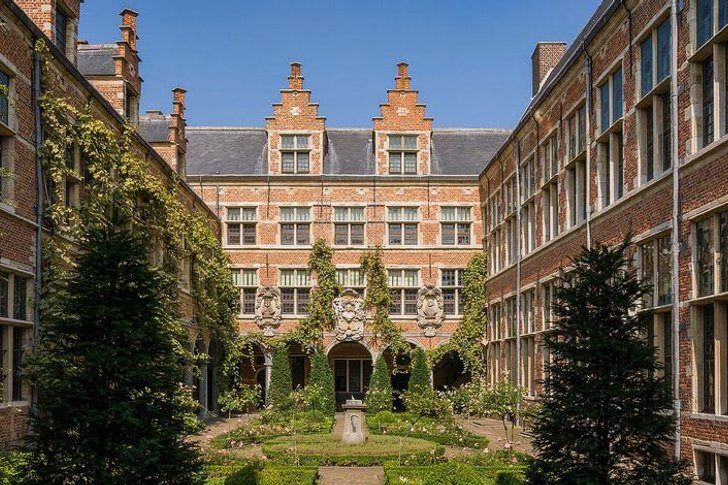
Fashion Museum
The collection of the museum tells about the history of the development of European fashion, from the Middle Ages to the present day. The museum funds contain more than 25 thousand different costumes, dresses, corsets, headdresses and other accessories. A separate place is occupied by an exhibition of works by contemporary designers. Holidays and interesting workshops are often organized for children on the territory of the museum.
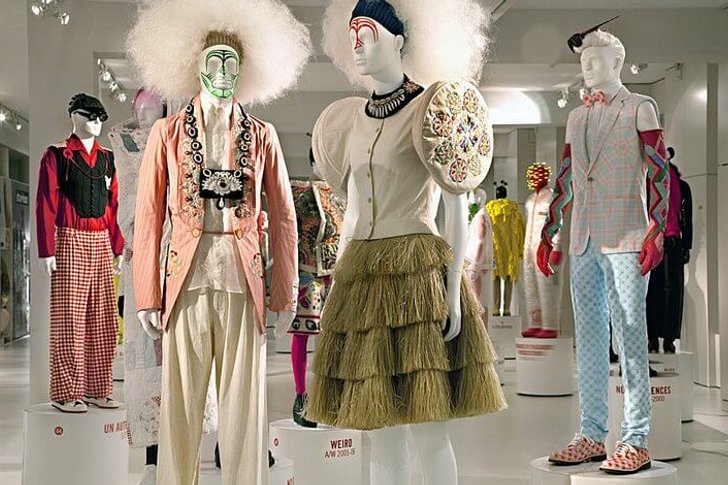
Mayer van den Bergh Museum
An exposition organized from the private collection of the merchant Mayer, who lived in Antwerp in the middle of the 19th century. After his early death, the paintings were donated to the city (such was the will of the mother of the merchant Henrietta Mayer). In addition to the exhibits, a special building, built at the expense of the Mayer family, also went into public use. Just in this room and housed the museum.
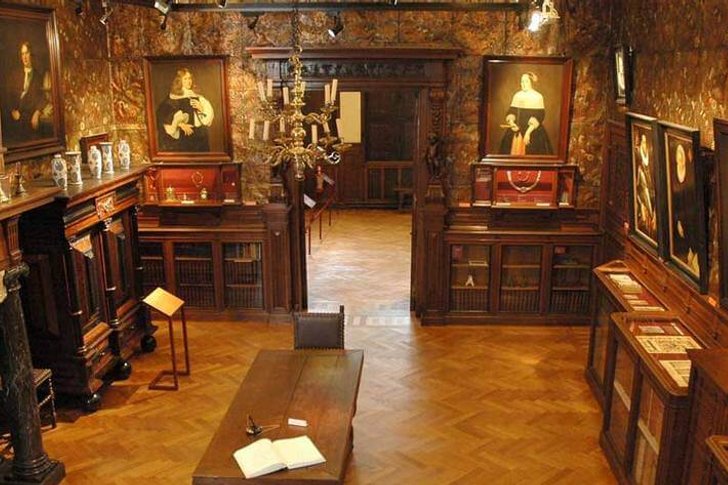
M.A.S. Museum
The modern building of 2011, which houses the art gallery and the museum of the shipping company. The structure is a cube of red sandstone with even rows of glass galleries. At this stage, there is an active formation of museum funds through private collections and the purchase of works of art at auctions. Earlier in the 16th century, the House of German Merchants was located on the site of the MAS Museum, but the building gradually fell into disrepair, in the 19th century it was demolished.

Rubens House
The house-museum of the famous artist P. Rubens, one of the most visited attractions in Antwerp. The museum exhibits both the canvases of the master himself and the works of his students - E. Van Dyck and J. Jordaens. The house is furnished with antique furniture of the 17th century, the interiors are decorated in the Baroque style. In 1937, the building passed into the city ownership, and was completely restored and reconstructed.

House of Butchers
A 16th-century building that belonged to the Butchers Guild. The building resembles a harsh and impregnable castle with thick walls. The house is made of red brick, decorated with lancet windows and "Gothic" towers. The butchers' guild was very rich, so they could afford to build such a grand structure. At the end of the XVIII century, the city authorities dissolved the Guild and took away the house.
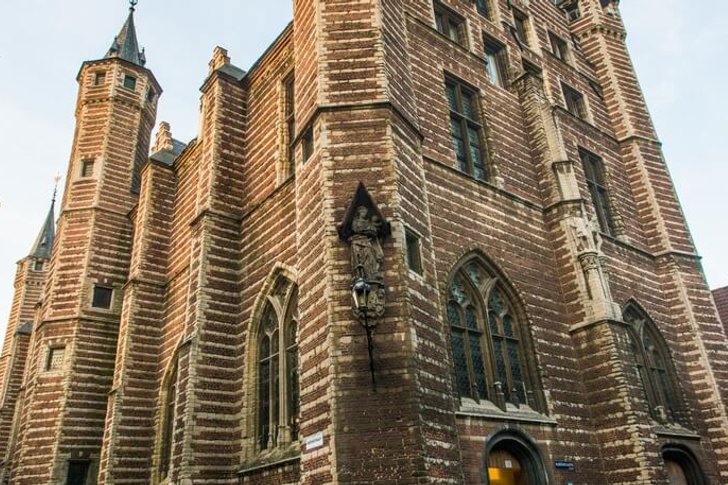
Antwerp Zoo
City zoo, located near the railway station. It is considered one of the oldest in Europe. The zoo is home to about 770 species of animals (more than 5 thousand individuals). On the territory there are interesting architectural monuments that can be classified as historical heritage. Over the 169 years of its existence, the Antwerp Zoo has increased its area by 10 hectares.
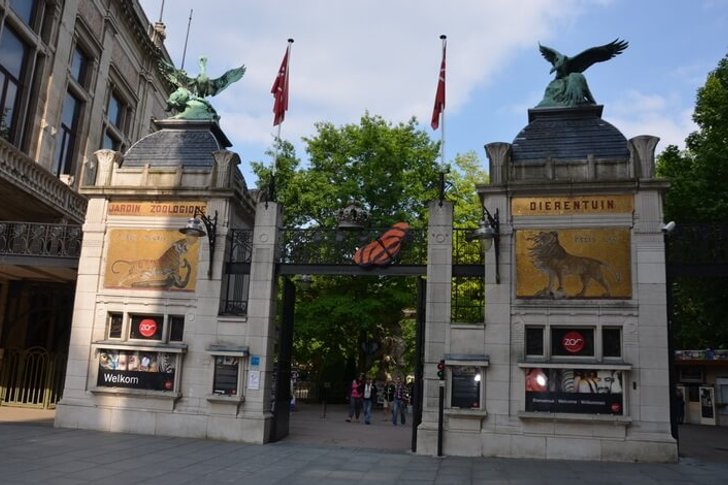
Meir street
One of the central streets, which is densely chosen by tourists. There are many historical sights, expensive shops, prestigious hotels here. On Meir Street during the high tourist season, it is always noisy from a large number of people. In the 16th century, the very first exchange building in the world appeared here. The predominant architectural style of building is baroque.

Diamond Quarter of Antwerp
Antwerp is the center of the European diamond trade. The city has its own Diamond Quarter, where hundreds of workshops, four trade exchanges and many shops are located. Visitors are offered a huge number of diamonds of various weights, colors and shapes. Prices start from quite affordable and reach fabulously high for unique gems.

Port of Antwerp
A major European port, which ranks second in terms of cargo transportation after the Port of Rotterdam. The harbor is located 90 km. from the North Sea at the mouth of the Scheldt River. Several hundred cranes and dozens of docks continuously serve ships from all over the world. Through a network of canals, the port of Antwerp is connected to many parts of Belgium and France, as well as to the Rhine River.
